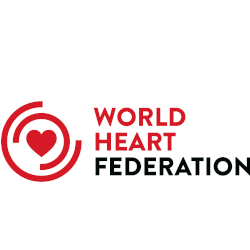Original Research
Biomarkers and Mortality in Severe Chagas Cardiomyopathy
Abstract
Background: Chagas cardiomyopathy is a chronic sequela of infection by the parasite, Trypanosoma cruzi. Advanced cardiomyopathy is associated with a high mortality rate, and clinical characteristics have been used to predict mortality risk. Though multiple biomarkers have been associated with Chagas cardiomyopathy, it is unknown how these are related to survival.
Objectives: This study aimed to identify biomarkers associated with mortality in individuals with severe Chagas cardiomyopathy in an urban Bolivian hospital.
Methods: The population included individuals with and without T. cruzi infection recruited in an urban hospital in Santa Cruz, Bolivia. Baseline characteristics, electrocardiogram findings, medications, and serum cardiac biomarker levels (B-type natriuretic peptide [BNP], N-terminal proeB-type natriuretic peptide [NT-pro—BNP], creatine kinase-myocardial band [CK-MB], troponin I, matrix metalloproteinase [MMP]-2, MMP-9, tissue inhibitor of metalloproteinases [TIMP] 1 and 2, transforming growth factor [TGF] beta 1 and 2) were ascertained. Echocardiograms were performed on those with cardiac symptoms or electrocardiogram abnormalities at baseline. Participants were contacted approximately 1 year after initial evaluation; deaths were reported by family members. Receiver-operating characteristic curves (ROC) were used to optimize cutoff values for each marker. For markers with area under the curve (AUC) >0.55, Cox proportional hazards models were performed to determine the hazards ratio (HR) and 95% confidence interval (CI) for the association of each marker with mortality.
Results: The median follow-up time was 14.1 months (interquartile range 12.5, 16.7). Of 254 individuals with complete cardiac data, 220 (87%) had follow-up data. Of 50 patients with severe Chagas cardiomyopathy at baseline, 20 (40%) had died. Higher baseline levels of BNP (HR: 3.1, 95% CI: 1.2 to 8.4), NT-proBNP (HR: 4.4, 95% CI: 1.8 to 11.0), CK-MB (HR: 3.3, 95% CI: 1.3 to 8.0), and MMP-2 (HR: 4.2, 95% CI: 1.5 to 11.8) were significantly associated with subsequent mortality.
Conclusions: Severe Chagas cardiomyopathy is associated with high short-term mortality. BNP, NT-proBNP, CK-MB, and MMP-2 have added predictive value for mortality, even in the presence of decreased ejection fraction and other clinical signs of congestive heart failure.
Highlights
- Our study followed patients with severe Chagas cardiomyopathy who had a 40% mortality at 1- to 2-years follow-up.
- For those with severe Chagas cardiomyopathy, the characteristics between those who died and those who survived to follow-up were similar, except body mass index, which was significantly higher among the survivors.
- BNP, NT-proBNP, CK-MB, and MMP-2 were significantly higher among those that died than in those who survived.


